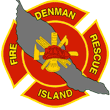EXTREME FIRE HAZARD TOTAL FIRE BAN IN EFFECT
- A Complete and Total FIRE BAN is in effect. No fires of any kind.
- No Smoking in or near the forest.
- All High-Risk Activities are prohibited.
- If the activity you are considering creates an ignition source or any kind of a spark……please don’t do it.
Ground patrols will be ongoing in high risk areas.
High Risk Activities (Machinery & Industrial Operations)
High-risk activities include but are not limited to any of the following activities carried out in a wooded or near area: –
- operating a power saw;
- mechanical tree felling, woody debris piling or tree processing, including de-limbing;
- welding;
- portable wood chipping, milling, processing or manufacturing;
- skidding logs
Other high risk activities include: mechanical brushing, disk trenching, use of explosives, using spark or fire producing tools, fireworks, grinding, mechanical land clearing and maintaining right of ways (including grass mowing).
FAQ’s
Is a charcoal barbecue allowed? Enclosed propane or briquette BBQ’s, used with due caution, are permitted.
Can I use a gas powered log splitter? No, it is considered a high risk activity.
What if I see someone smoking at Chickadee Lake? There are private individuals that are patrolling Winter Wren and Chickadee Lake daily. I have also been doing regular patrols.
Is it okay to use an electric weed wacker with a nylon line during the fire ban? Although, not specifically restricted, we ask that you try and wait until the fire danger is lower to use anything that may cause a spark.
I have seen people parking their car on the side of the road in the grass, is that ok? Never park your vehicle in tall, dry grass or other dry organic material. Heat from your exhaust system can spark a wildfire.
Wildfire Causes
For a wildfire to ignite and burn sufficient of the following three elements need to be present in combination:
- Fuel in the form of live or dead trees, vegetation and other organic matter;
- Oxygen in the air around us;
- Heat to ignite and burn, from lightning or human sources.
The cause of a wildfire depends on the source of the heat that ignited a fuel source.
Natural Wildfires
The vast majority of naturally-caused wildfires are ignited by lightning. When lightning strikes, it can create enough heat to ignite a tree or other fuel source. Lightning strikes cause approximately 60% of wildfires in the Province in an average year. While lightning-caused wildfires cannot be prevented, the severity of wildfires may be reduced through land management activities such as fuels management, prescribed burning and landscape fire management planning.
Theoretically, there are other causes that could fall into the natural wildfire category, including rock fall, meteorite or volcano, but the likelihood of non-lightning caused natural wildfires is extremely rare in British Columbia.
Person-Caused Wildfires
There are numerous ways human activity can start wildfires, either accidentally or intentionally. On average 40% of wildfires in British Columbia are person-caused by activities such as open burning, the use of engines or vehicles, dropping burning substances such as cigarettes, or any number of other human-related activities that can create a spark or a heat source sufficient to ignite a wildfire. The most important factor of person-caused fires is that they are preventable.

Leave A Comment
You must be logged in to post a comment.